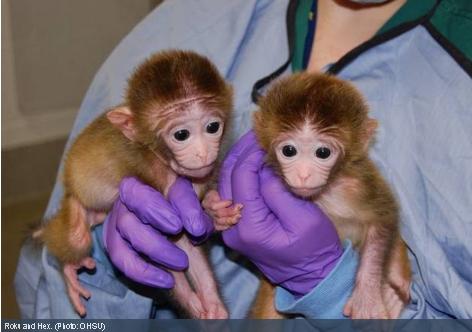Born the First Monkey, Developed from Stem Cells of Separate Embryos

New research has resulted in the first successful birth of monkeys developed from stem cells taken from separate embryos. Research, held at the University of Oregon Health and Science, also confirmed in respect to the aspects studied that the capabilities and functions of stem cells involved differ between primates and rodents. We worked with stem cells and pluripotent cells.
The stem cells are cells from the initial stage embryo that have the ability to divide and produce all the cells differentiated from the placenta and the body of the organism. Pluripotent cells are cells derived from an embryonic stage rear which are capable of forming the body but not the placenta. In mice, both as the pluripotent stem cells from two different individuals may combined to form an embryo that later becomes an individual.
However, current research has shown that in a larger animal, in this case the rhesus macaque monkey, individuals formed from stem cells taken from two different embryos can only develop from stem cells. The reason for this remains unknown.
The team made the find Shoukhrat Mitalipov to successfully produce three offspring of rhesus monkeys that have received the names of Roku, Hex and Chimero, being the first monkey in the world developed from stem cells taken from separate embryos.
Therapies using cells mother are very promising as a means to replace damaged neurons in people suffering from paralysis due to injury of the spinal cord, or also for example, to replace damaged dopamine-producing cells in patients with Parkinson’s disease, that these cells lost as a result of the disease. As therapies using stem cells are moving from the laboratory to the clinic, and from mice to humans, it is becoming increasingly necessary to find out what can and can not do these cells and how cell functions can differ between species. Hence the reason for conducting studies like this one from the University of Oregon Health and Science.
Shortlink:

Recent Comments